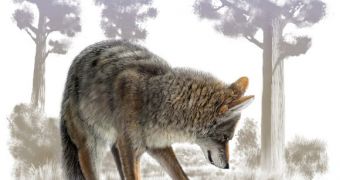

Named in 2011, Tiarajudens eccentricus was a squat, tubby proto-mammal that roamed prehistoric Brazil about 260 million years ago.

One of the oldest saber-toothed creatures we know about was an herbivore. Juan Carlos Cisneros, Fernando Abdala, Tea Jashashvill, Ana de Oliveira Bueno, Paula Dentzien-Dias CC By-SA 4.0 Paleontologists think Tiarajudens used its fangs to intimidate and spar with rivals. Such differences underscore that there were many ways to be saber-toothed, and the following creatures help highlight the variety of fanged creatures that have walked the earth. Most of the dirk-toothed cats had longer, finely serrated fangs, while scimitar-toothed cats had shorter canines with shorter serrations, and paleontologists suspect that the different tooth shapes indicate different biting techniques. Saber-toothed cats, for example, are often divided into the dirk-toothed and scimitar-toothed groups. Male musk deer compete with each other every mating season by fighting with their fangs.Įven among saber-toothed carnivores, though, more than one tooth shape or dental arrangement has worked. On that score, there are technically still some saber-toothed animals around today. Other mammals and even proto-mammals have been called saber-toothed even though they’re herbivores, using very similar teeth to tussle with each other rather than bite into prey. But the designation isn’t quite so simple. Most of the time, paleontologists use the term “saber-toothed” for carnivorous mammals who use long, flattened canine teeth to puncture or shear away the flesh of other creatures. But that’s only the tip of a saber-toothed history going back more than 250 million years. The ferocious Smilodon of the Ice Age is among the most famous: a lion-sized cat with huge fangs that hunted ancient horses and bison across the Americas. Time and again, animals with elongated canine teeth have roamed the planet. Evolution has a fondness for saber-toothed creatures.


 0 kommentar(er)
0 kommentar(er)
